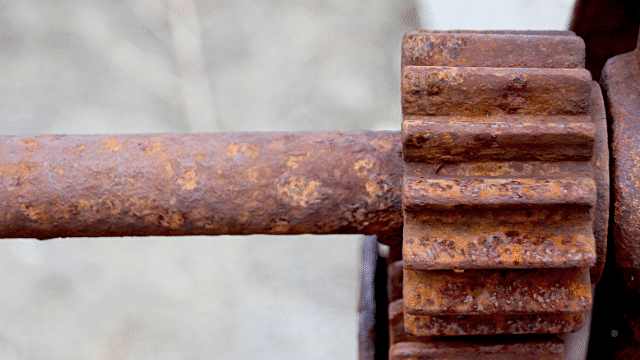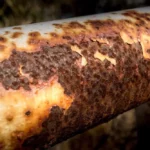
Rusting of iron is a chemical reaction of iron with oxygen in the presence of moisture. Rust is majorly iron (III) oxide. Rusting involves a series of oxidation-reduction reactions which produces a mixture of iron (II) oxide and Iron (III) oxide.
Rusted iron is flaky and weak. It is not strong and does not possess any desirable qualities. Rusting of iron causes damaging and collapsing of bridges, damaging of railings, buildings, automobiles, and so on.
Prevention of Rusting of Iron
Some ways by which the rusting of iron can be prevented are presented below.
i. Electroplating: Iron sheets can be electroplated with a metal which is more reactive than iron so that this reactive metal gets rusted instead of the Iron. Electroplating can be achieved by making the Iron the cathodeA cathode is the electrode from which a conventional current leaves the electrolyte. It is the negative part of the cell where reduction takes place. More and another metal an anodeAn anode is an electrode of a polarized electrical device through which conventional current enters the device. It is the positive part of electrolytes where oxidation takes place. More. Aluminum, magnesium, and zinc, are examples of metals that can be used as an anode.
ii. Galvanization: Rusting of iron can be prevented by using layers of zinc to coat the surface of the iron. This method of prevention of rusting is called galvanization. The zinc layers keep the iron from exposure to moisture, heat, and other factors that will otherwise make the iron rust. Consequently, instead of iron corroding, the zinc will be corroded. Galvanization is achieved by electroplating. The problem with galvanization is that it prevent corrosion Corrosion is defined as a natural process that causes the transformation of pure metals into undesirable substances when they react with substances like water or air. This reaction causes damage and... More for just a limited time.
Corrosion is defined as a natural process that causes the transformation of pure metals into undesirable substances when they react with substances like water or air. This reaction causes damage and... More for just a limited time.
iii. Coating: Coating the surface of the iron with paint, grease, etc. protects the iron from rusting as it prevents the surface of the metal from exposure.
iv. Use of Alloys: Alloys of iron such as steel are more resistant to corrosion. Instead of using iron, if it is alloyed with other elements, it will prevent it from rusting.



Responses